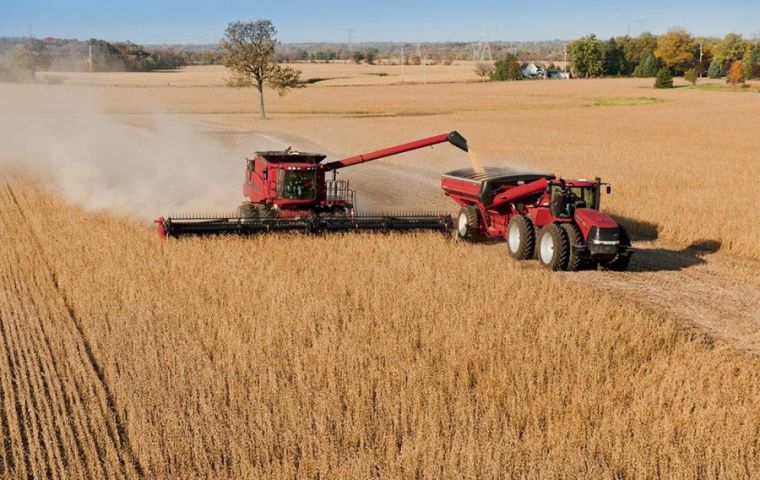MercoPress. South Atlantic News Agency
Dry weather threatens 20% of Argentine winter and summer crops
 While large regions of the grain exporter's Pampas farm belt are in good condition, one-fifth of the growing area has been hit by arid weather over recent weeks
While large regions of the grain exporter's Pampas farm belt are in good condition, one-fifth of the growing area has been hit by arid weather over recent weeks Dry weather in Argentina is hitting the outlooks for wheat and corn crops, local climate experts said, while low-cost soy is being supported by growers looking to hedge their bets with political uncertainty rising ahead of October's presidential vote.
While large regions of the grain exporter's Pampas farm belt are in good condition, around one-fifth of the growing area has been hit by arid weather over recent weeks, said Eduardo Sierra, meteorologist at the University of Buenos Aires.
Sierra, climate consultant to the highly referenced Buenos Aires Grains Exchange, has cut his 2019/20 wheat crop forecasts to 17 million tons from 20 million tons previously and his corn crop outlook for this season by a fifth to 40 million tons. His soy projection has edged down to 50 million tons.
“You have 80% of the grains belt in good condition and 20% in mediocre to bad condition,” he said, adding these areas had about 30% of Argentina's wheat, 20% of its soy and 25% of its corn crop.
The dryness has hurt wheat yields and slowed corn sowing, as growers pile into safe-haven soybeans, Argentina's main cash crop. Uncertainty is rife in the recession-hit economy with left-leaning Peronist Alberto Fernandez expected to win the Oct. 27 presidential election.
Argentina this month signed a soy meal export deal with China, linking the world's biggest international supplier of the livestock feed with its biggest consumer. The pact was inked as Washington and Beijing fight a trade war that is reconfiguring global supply chains.
With the United States harvest now starting, the grain futures market is starting to turn more of its attention to South American weather and crop outlooks.
The U.S. Department of Agriculture expects a 2019/20 Argentine soy crop of 53 million tons versus 55.3 million tons in 2018/19, a corn crop of 50 million tons versus 51 million in 2018/19 and wheat up slightly at 20.5 million tons.
Growers started planting corn in September, while soy starts going into the ground in October. Wheat was sown in June-July and will be harvested at the turn of the year.
Of Argentina's big three crops, wheat is at the most advanced stage, and as spring sets in, water demand is increasing, particularly in growing areas in the north, said David Hughes, president of the country's wheat industry chamber ArgenTrigo.
“The central region will also need water very soon as it is entering a critical stage of growth. Fortunately rain is expected next week, and hopefully will help,” he said. The southern region has some very dry spots. Although it is not near its critical stage of growth, it will need water soon.”




Top Comments
Disclaimer & comment rulesCommenting for this story is now closed.
If you have a Facebook account, become a fan and comment on our Facebook Page!